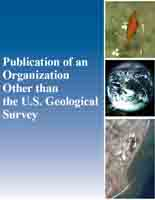Density-habitat relationships of white-tailed deer (Odocoileus virginianus) in Finland
Links
- More information: Publisher Index Page (via DOI)
- Open Access Version: Publisher Index Page
- Download citation as: RIS | Dublin Core
Abstract
In heterogeneous landscapes, resource selection constitutes a crucial link between landscape and population-level processes such as density. We conducted a non-invasive genetic study of white-tailed deer in southern Finland in 2016 and 2017 using fecal DNA samples to understand factors influencing white-tailed deer density and space use in late summer prior to the hunting season. We estimated deer density as a function of landcover types using a spatial capture-recapture (SCR) model with individual identities established using microsatellite markers. The study revealed second-order habitat selection with highest deer densities in fields and mixed forest, and third-order habitat selection (detection probability) for transitional woodlands (clear-cuts) and closeness to fields. Including landscape heterogeneity improved model fit and increased inferred total density compared with models assuming a homogenous landscape. Our findings underline the importance of including habitat covariates when estimating density and exemplifies that resource selection can be studied using non-invasive methods.
Study Area
| Publication type | Article |
|---|---|
| Publication Subtype | Journal Article |
| Title | Density-habitat relationships of white-tailed deer (Odocoileus virginianus) in Finland |
| Series title | Ecology and Evolution |
| DOI | 10.1002/ece3.9711 |
| Volume | 13 |
| Issue | 1 |
| Publication Date | January 10, 2023 |
| Year Published | 2023 |
| Language | English |
| Publisher | Wiley |
| Contributing office(s) | Coop Res Unit Leetown |
| Description | e9711, 14 p. |
| Country | Finland |


